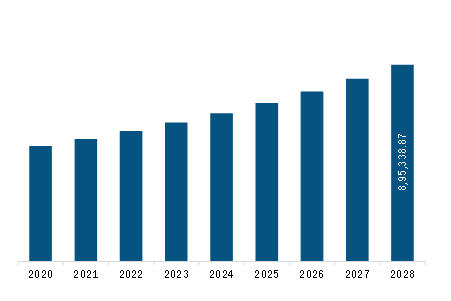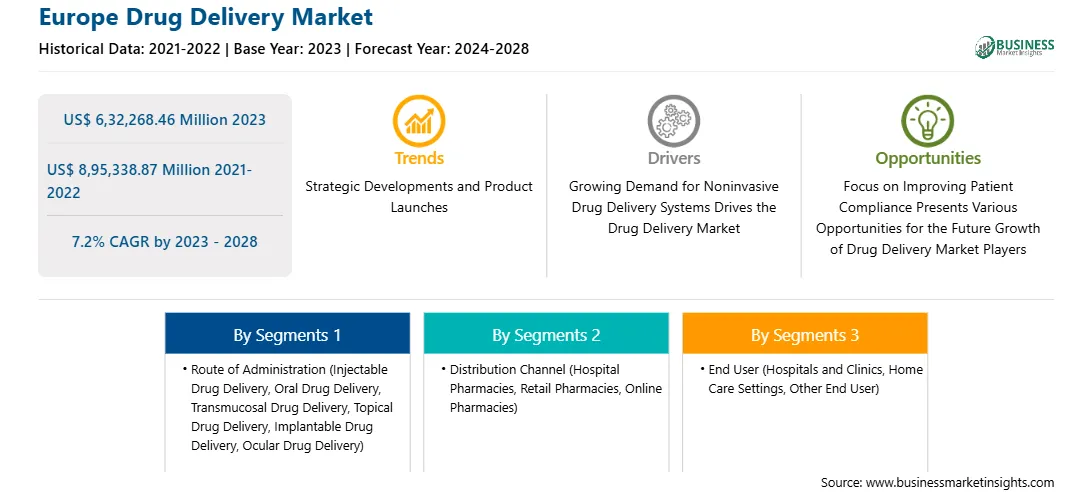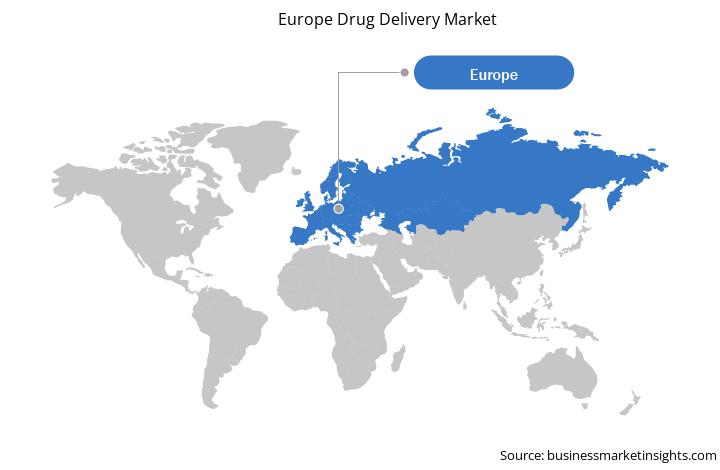Noninvasive drug delivery generally refers to methods of painless drug delivery across the biological barriers of mucosal surfaces or skin. This drug delivery method could lead to improved access to medicines, adherence to treatment regimes, and better drug safety profiles. Patients prefer noninvasive drug delivery routes due to such apparent advantages over injection-based drug administration. Patient compliance has been found to be much higher when drugs are administrated by noninvasive methods, as they experience decreased pain during the procedure. With improvements in medical devices and transdermal delivery technologies, the noninvasive mode of drug delivery is now ready to compete with traditional methods of oral and injectable routes of drug delivery. Topical, transdermal-active (device-aided enhanced penetration), transdermal-passive, trans-ocular membrane, trans-mucosal membrane, and delivery via an alveolar membrane from inhaled medication are a few of the popular noninvasive drug delivery methods.
A low rejection rate, ease of administration, convenience, and durability make TDDS the most attractive method of drug delivery. In addition to pharmaceutical administration in medical facilities, TDDS could be used in different procedures in the skincare industry. Since this method mainly involves local administration, it can prevent nonspecific delivery to tissues that are not targeted by the drug. Developments in TDDS are likely to help control the prevalence of cardiovascular and central nervous system disorders, genetic disorders, diabetes, neuromuscular disorders, and infectious (including localized conditions) diseases while driving advancements in vaccination and patient preference for self-administration of drugs for long-term treatment.
Drug delivery through noninvasive methods involves reduced dosing frequency and simplified dosing schedules. Moreover, these delivery systems can significantly reduce the cost of clinical use as patients can self-administer drugs via these methods. In many cases, the manufacturing cost of drugs with noninvasive delivery systems is lesser than the production costs of injections. For instance, inhaled insulin has emerged as a well-tolerated and preferred modality for treating diabetes. Thus, the growing demand for noninvasive drug delivery systems propels the growth of the drug delivery systems market.
The Europe drug delivery market is sub segmented into Germany, France, Italy, the UK, Spain, and the Rest of Europe. The market growth in this region is associated with rise in incidences of chronic diseases, increase in the geriatric population, expansion strategies by the market players, and growth of the pharmaceutical industry. Germany is known for its technological advancements, leading the country to the forefront in the medical & healthcare sectors. German companies such as Haselmeier have developed the D-Flex pen, a drug delivery device that works more efficiently than previously developed injection pens. The pen is the next-generation drug delivery device for subcutaneous self-injection. The multi-dose fixed pen can administer the drug in a single fixed dose or several pre-set doses; therefore, it is preferred over conventional drug delivery devices.
Strategic insights for the Europe Drug Delivery provides data-driven analysis of the industry landscape, including current trends, key players, and regional nuances. These insights offer actionable recommendations, enabling readers to differentiate themselves from competitors by identifying untapped segments or developing unique value propositions. Leveraging data analytics, these insights help industry players anticipate the market shifts, whether investors, manufacturers, or other stakeholders. A future-oriented perspective is essential, helping stakeholders anticipate market shifts and position themselves for long-term success in this dynamic region. Ultimately, effective strategic insights empower readers to make informed decisions that drive profitability and achieve their business objectives within the market. The geographic scope of the Europe Drug Delivery refers to the specific areas in which a business operates and competes. Understanding local distinctions, such as diverse consumer preferences (e.g., demand for specific plug types or battery backup durations), varying economic conditions, and regulatory environments, is crucial for tailoring strategies to specific markets. Businesses can expand their reach by identifying underserved areas or adapting their offerings to meet local demands. A clear market focus allows for more effective resource allocation, targeted marketing campaigns, and better positioning against local competitors, ultimately driving growth in those targeted areas.
Europe Drug Delivery Strategic Insights

Europe Drug Delivery Report Scope
Report Attribute
Details
Market size in 2023
US$ 6,32,268.46 Million
Market Size by 2028
US$ 8,95,338.87 Million
Global CAGR (2023 - 2028)
7.2%
Historical Data
2021-2022
Forecast period
2024-2028
Segments Covered
By Route of Administration
By Distribution Channel
By End User
Regions and Countries Covered
Europe
Market leaders and key company profiles
Europe Drug Delivery Regional Insights

Europe Drug Delivery Market Segmentation
The Europe drug delivery market is segmented into route of administration, distribution channel, end user, and country.
Based on route of administration, the Europe drug delivery market is segmented into injectable drug delivery, oral drug delivery, transmucosal drug delivery, topical drug delivery, implantable drug delivery, and ocular drug delivery. The injectable drug delivery segment held a larger share of the Europe drug delivery market in 2023.
Based on distribution channel, the Europe drug delivery market is segmented into hospital pharmacies, retail pharmacies, and online pharmacies. The hospital pharmacies segment held the largest share of the Europe drug delivery market in 2023.
Based on end user, the Europe drug delivery market is segmented into hospitals and clinics, home care settings, and other end user. The hospitals and clinics segment held the largest share of the Europe drug delivery market in 2023.
Based on country, the Europe drug delivery market is segmented into Germany, France, the UK, Italy, Spain, and the Rest of Europe. Germany dominated the share of the Europe drug delivery market in 2023.
Bausch Health Companies Inc; Baxter International Inc; Becton Dickinson and Co; Boehringer Ingelheim International GmbH; Boston Scientific Corp; Gerresheimer AG; GlaxoSmithKline Plc; Johnson & Johnson; Novartis AG; Novo Nordisk AS; Pfizer Inc; and Sever Pharma Solutions are the leading companies operating in the Europe drug delivery market.
The Europe Drug Delivery Market is valued at US$ 6,32,268.46 Million in 2023, it is projected to reach US$ 8,95,338.87 Million by 2028.
As per our report Europe Drug Delivery Market, the market size is valued at US$ 6,32,268.46 Million in 2023, projecting it to reach US$ 8,95,338.87 Million by 2028. This translates to a CAGR of approximately 7.2% during the forecast period.
The Europe Drug Delivery Market report typically cover these key segments-
The historic period, base year, and forecast period can vary slightly depending on the specific market research report. However, for the Europe Drug Delivery Market report:
The Europe Drug Delivery Market is populated by several key players, each contributing to its growth and innovation. Some of the major players include:
The Europe Drug Delivery Market report is valuable for diverse stakeholders, including:
Essentially, anyone involved in or considering involvement in the Europe Drug Delivery Market value chain can benefit from the information contained in a comprehensive market report.